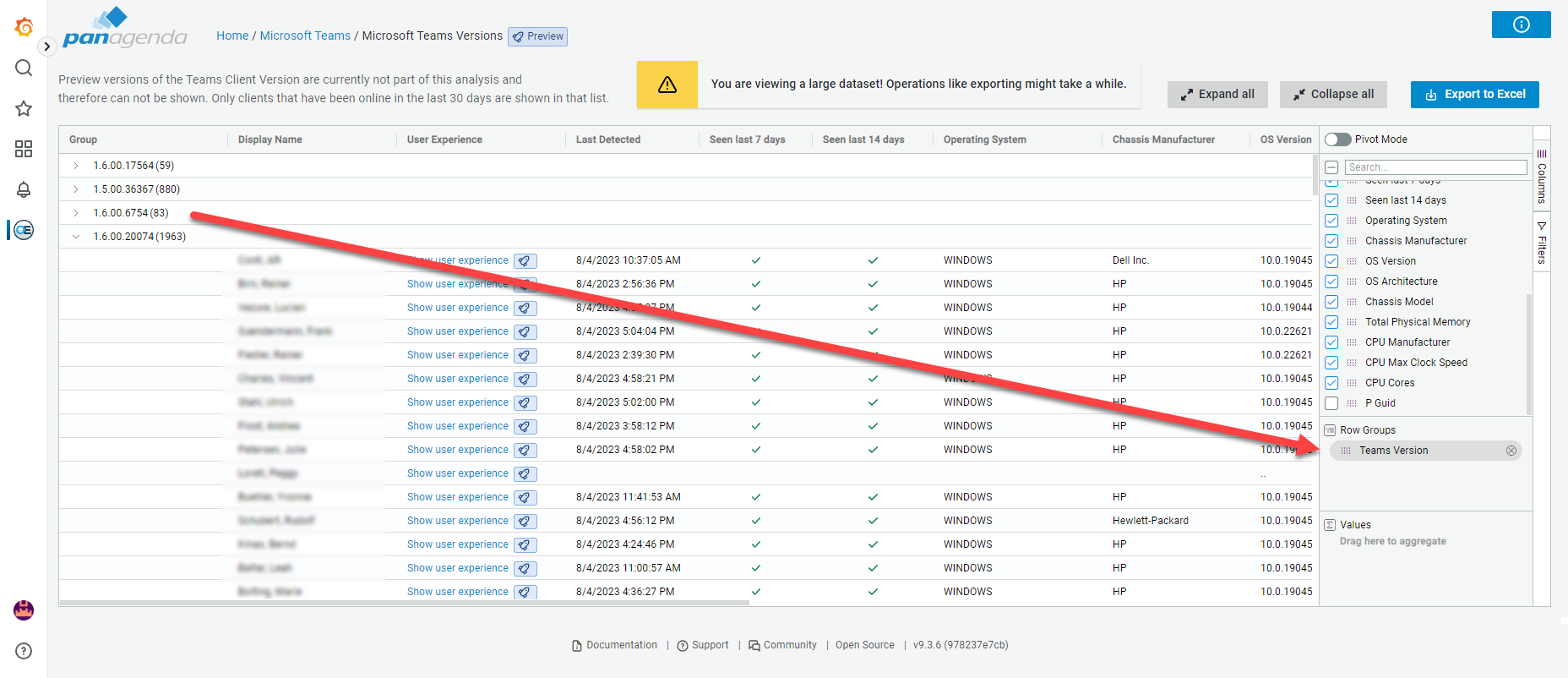The Microsoft Teams Version report shows a breakdown of users/devices for whom data was collected in the last 30 days, per version of the Microsoft Teams client they use. This allows you to quickly identify which users are using which version of the Microsoft Teams client.
Note: As of End of 2023/early 2024, Microsoft introduced a new Microsoft Teams client that has a significantly different version numbering.
How to use it
By default this view is categorized and sorted by Microsoft Teams version and shows various device specific characteristics. However, by using the view options on the right you can adjust this view to your own preferences.
Column/Filter options: On the right hand side of the Teams Report you will see the view options menu. This menu has two options by default:
Columns: which allows you to specify which fields/columns you would like to see and in which sorting, grouping and summarizing way.
Filters: which allows you to filter the data shown within the table based on column values.
Add/Remove columns from view: To add or remove a column from the view, simply browse the field list on the right hand side of the view and select/deselect the fields (columns) you would like to see or hide.
Categorization/grouping: To categorize / group the data by a certain field/column, go to the field list on the right hand side and move the field you would like to categorize into the section "Row Groups" (below the field list). To move, mouse over the dotted square just before the name of the column. If you add multiple fields, categorization will be done accordingly. The order in the Row Groups field determines the order in which the categorization is done.
Pivot Mode: Use the pivot table option to create a summary report showing the count values of the categories instead of the actual values. To activate the pivot table mode, simply toggle the Pivot Mode switch in the top of the view options.
Summarizing: This option allows you to add a count on the categories for the values contained within it.
Note: Changes made this way are not stored and will be reset after you move away from the view.
